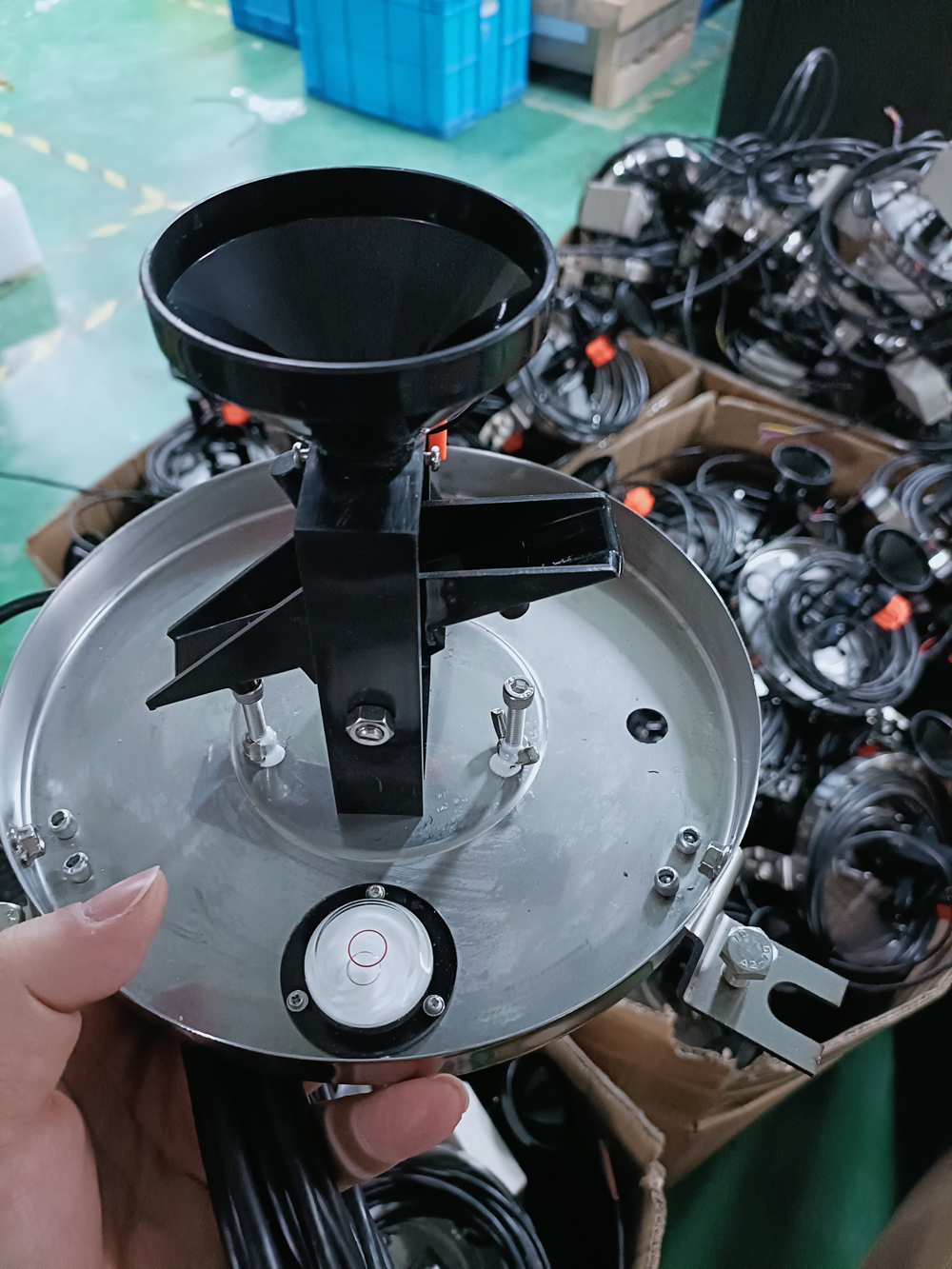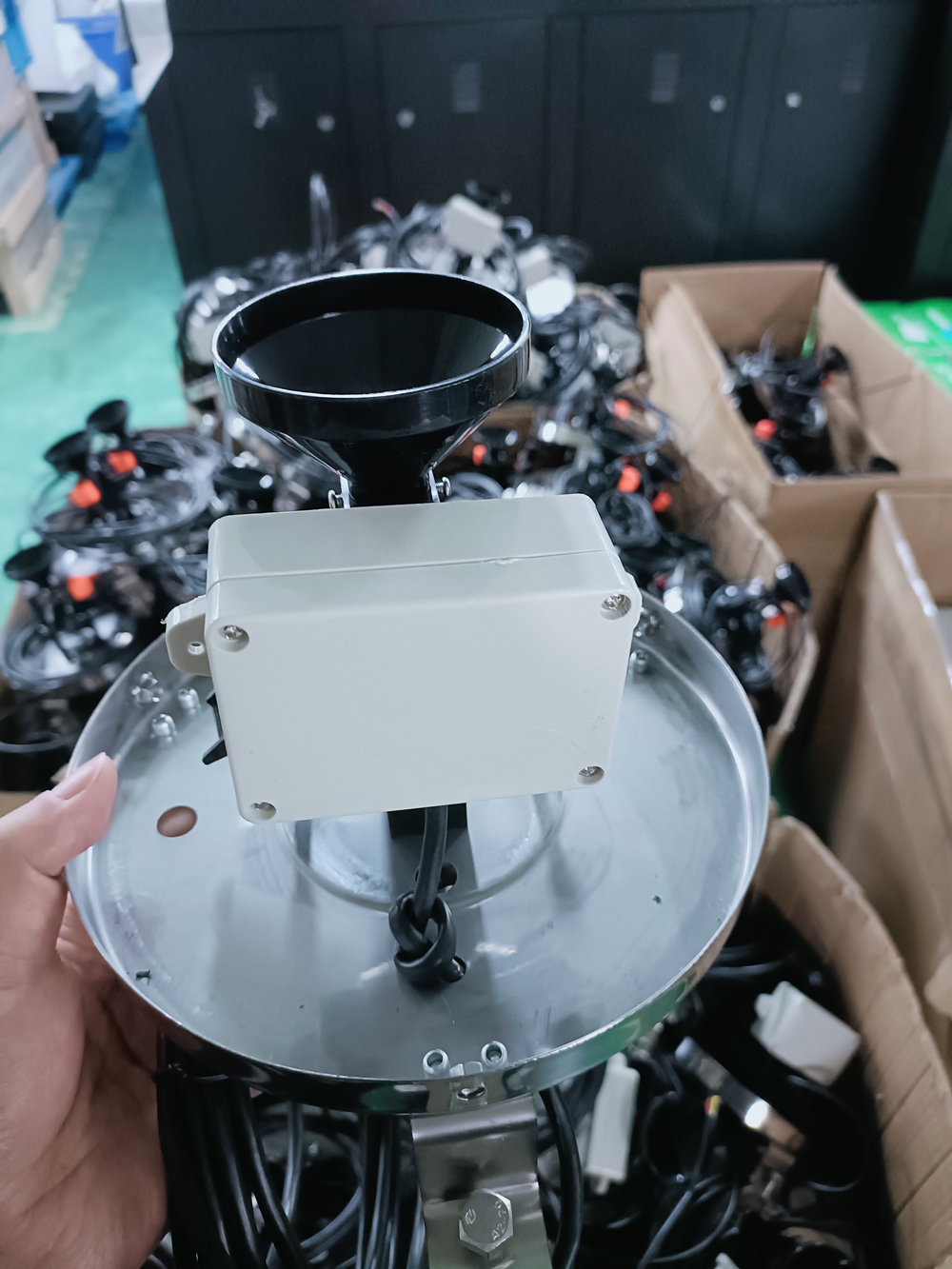

— Blogs —
—Products—
 Consumer hotline +8618073152920
Consumer hotline +8618073152920 WhatsApp:+8615367865107
Address:Room 102, District D, Houhu Industrial Park, Yuelu District, Changsha City, Hunan Province, China
Technical Support
Time:2024-04-14 11:48:07 Popularity:1828
Precautions and Common Problems in the Use of Tipping Bucket Rain Gauges
In practice, both single and double tipping bucket rain gauges may encounter some common problems that may affect the accuracy and reliability of their measurements. The following are some common considerations and potential problems:
1. tipping bucket cleaning and maintenance:
The tipping bucket of a rain gauge needs to be kept clean to prevent dust, leaves, insects and other debris from clogging the tipping bucket and causing inaccurate measurements.
Regularly check the tumbler for damage or wear, and replace the damaged tumbler in time.
2. The reset of the tumbler:
Single tipping bucket rain gauge may need to be reset manually after the end of precipitation, if the reset is not complete, it may affect the next measurement.
Double bucket rain gauges have alternating buckets, but it is still necessary to ensure that each bucket is properly reset at the end of precipitation.
3. Precipitation type and intensity:
Different precipitation types (e.g., rain, snow, hail) may require different calibration methods.
The intensity of precipitation can also affect the accuracy of the tipping bucket measurements, especially in heavy precipitation conditions, which may prevent the tipping bucket from tipping properly.
4. Electrical and transmission issues:
If the rain gauge is electronic, the stability of the power supply and cable connections is critical to ensure continuous operation.
For rain gauges that need to transmit data remotely, the stability and reliability of data transmission are also issues to consider.
5. Installation height and location:
The mounting height and location of the rain gauge has a significant impact on its measurement results. It should be ensured that the rain gauge is installed in an unobstructed place and in an area where precipitation can be adequately received.

6. Environmental disturbances:
Wind, evaporation, and other environmental factors may interfere with the proper operation of the rain gauge and need to be monitored and considered.
7. calibration and verification:
Periodically, rain gauges are calibrated to ensure the accuracy of their measurements.
Comparisons are made with other types of rain gauges or manual observations to verify the measurements of the rain gauge.
The impact of these problems on rain gauge measurements can be minimized by proper installation, regular maintenance and calibration to ensure that they provide accurate and reliable precipitation data.

Maintenance and calibration of rain gauges is a critical part of ensuring their accuracy. Here are some practical tips and suggestions:
1. Clean regularly:
Periodically check the tipping bucket of the rain gauge for debris clogging and, if so, clean it with a clean brush or compressed air.
Clean the metering chamber to ensure that it is free from contaminants such as mud, leaves, etc.
2. Tipping bucket reset mechanism:
Ensure that the tipping bucket reset mechanism of the rain gauge is working properly, and for rain gauges that are manually reset, periodically check that the reset is smooth.
3. Calibration check:
Carry out regular calibration checks, either by using the standard bucket method or by comparison with another rain gauge that is known to be accurate.
If the rain gauge is electronic, check that the calibration parameters do not need to be adjusted to ensure that the sensor and display device match.
4. Check funnel and seals:
Check the funnel portion of the rain gauge for damage or wear to ensure that rainwater cannot leak through the seals.
5. electrical connections and power supply:
For electronic rain gauges, check that the power cord and electrical connections are secure and not worn or damaged.
Ensure that the power supply is stable, and if batteries are used, replace them periodically or check their condition.
6. Recording and monitoring:
Record the operation data of the rain gauge, including the amount of precipitation, time of precipitation events, etc. This helps to analyze the accuracy of the data and the operation status of the equipment.
Monitor the rain gauge for abnormalities, such as sudden drops or stops in precipitation, which may indicate equipment malfunction.
7. Environmental factors:
Consider environmental factors at the installation location such as wind, temperature, humidity, etc., which may affect the accuracy of the rain gauge.
8. device documentation:
Keep the user manual and maintenance records for the rain gauge for reference when needed.
9. professional support:
If necessary, seek support from the manufacturer or a maintenance professional who can provide specialized maintenance and calibration services.
By following these maintenance and calibration tips and recommendations, you can ensure that your rain gauge will maintain good performance and accuracy over the long term.
Prev:Tipping bucket rain gauge installation method
Next:Implementation Steps for Meteorological and Agricultural Sensor Projects
Related recommendations
Sensors & Weather Stations Catalog
Agriculture Sensors and Weather Stations Catalog-NiuBoL.pdf
Weather Stations Catalog-NiuBoL.pdf
Related products
 Combined air temperature and relative humidity sensor
Combined air temperature and relative humidity sensor Soil Moisture Temperature sensor for irrigation
Soil Moisture Temperature sensor for irrigation Soil pH sensor RS485 soil Testing instrument soil ph meter for agriculture
Soil pH sensor RS485 soil Testing instrument soil ph meter for agriculture Wind Speed sensor Output Modbus/RS485/Analog/0-5V/4-20mA
Wind Speed sensor Output Modbus/RS485/Analog/0-5V/4-20mA Tipping bucket rain gauge for weather monitoring auto rainfall sensor RS485/Outdoor/stainless steel
Tipping bucket rain gauge for weather monitoring auto rainfall sensor RS485/Outdoor/stainless steel Pyranometer Solar Radiation Sensor 4-20mA/RS485
Pyranometer Solar Radiation Sensor 4-20mA/RS485
Screenshot, WhatsApp to identify the QR code
WhatsApp number:+8615367865107
(Click on WhatsApp to copy and add friends)